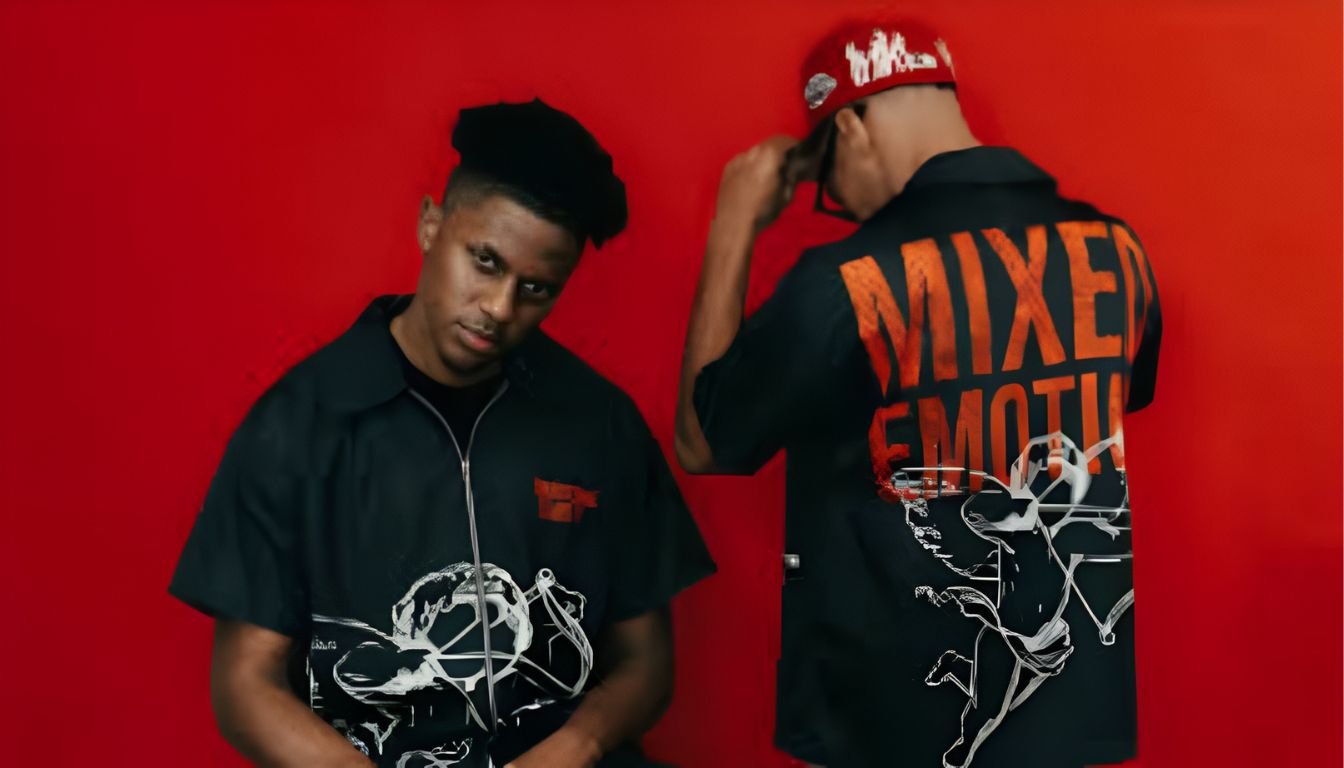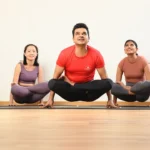Clothing has always transcended the realm of utility, operating instead as a silent communicator of internal states. Within each outfit lies a palette of feelings that often remain unspoken—joy, sorrow, confidence, or uncertainty. Mixed emotions clothing magnifies this dynamic by making paradox visible, presenting attire that embodies contrasting energies simultaneously. A single garment may whisper vulnerability while boldly proclaiming defiance. This duality transforms fashion into a canvas of inner complexity, allowing the wearer to articulate mixedemotionn.com too intricate for words. Dressing then ceases to be routine; it becomes a poetic act of expression and discovery.
The Philosophy of Mixed Emotions in Fashion
At its core, mixed emotions clothing embodies the philosophy of embracing contradiction rather than concealing it. Garments designed in this manner speak to the human condition, where emotions are layered and rarely linear. A sharply tailored jacket stitched with delicate floral patterns represents both strength and tenderness, revealing the dual essence of its wearer. Such creations reject the rigidity of single-message fashion, instead promoting authenticity through complexity. The philosophy here is liberating—fashion does not have to simplify identity but rather celebrate its multifaceted nature. Mixed emotions attire honors vulnerability and boldness alike, transforming contradiction into creative harmony.
Exploring the duality of garments
The beauty of duality emerges when unlikely elements are fused into a coherent whole. A voluminous silk skirt paired with distressed leather boots speaks simultaneously of fragility and resilience. These combinations disrupt conventional expectations yet generate fresh aesthetic possibilities. Duality is not chaos; it is balance found in contrast, a visual metaphor for the richness of lived experiences. Instead of flattening complexity, clothing built upon duality heightens it, offering the wearer a way to inhabit contradictions with grace. Each outfit becomes a reminder that opposites can coexist, producing ensembles that capture the rhythm of human emotions.
Symbolism behind layered feelings in attire
Every cut, hem, and stitch is imbued with symbolic meaning. An asymmetrical silhouette might echo emotional imbalance, while long, exaggerated sleeves convey expansiveness of spirit. Layering, too, becomes a symbolic practice: garments stacked upon each other mirror thoughts overlapping in the human psyche. This symbolic layering transforms dressing into storytelling, each garment representing an emotional chapter. The resulting ensemble is a physical narrative of contradictions—joy interwoven with melancholy, vulnerability cloaked in strength. By wearing such symbolism, individuals reveal the depth of their inner world, inviting observers to interpret their attire as a window into layered human sentiment.
Color Contrasts and Emotional Dialogue
Colors remain the most immediate and striking carriers of emotion within fashion. Mixed emotions clothing capitalizes on their power, staging a vivid dialogue between bold vibrancy and subdued calm. A blazing crimson coat layered over a dove-gray dress embodies vitality tethered to serenity, a powerful duality that mirrors inner tension. Similarly, pairing cobalt with pastel pink creates a chromatic conversation between intensity and softness. These orchestrated clashes are not arbitrary; they reflect the nuances of emotional contradiction. In this way, clothing becomes a psychological landscape painted in color, stimulating creativity by transforming emotions into wearable visual language.
Bold hues meeting subdued tones
The juxtaposition of bold and muted tones creates a dialogue that instantly captivates the eye. Imagine a neon green blazer draped over a cream silk slip—such contrasts disrupt expectation while embodying inner dissonance. Bright hues symbolize vitality, audacity, or emotional intensity, while subdued tones reflect quietness, contemplation, or restraint. By combining them, fashion creates an outfit that honors both sides of the emotional spectrum. This pairing challenges traditional styling conventions, encouraging creativity through intentional dissonance. Instead of selecting colors that blend seamlessly, mixed emotions clothing thrives on collision, proving that vibrancy and stillness can coexist harmoniously in attire.
How palettes narrate inner contradictions
Every color palette is a story told without words, one that communicates emotional nuance through chromatic dialogue. Emerald paired with steel gray illustrates hope entangled with solemnity. Scarlet with midnight blue portrays passion subdued by restraint. Through such intentional contrasts, clothing transforms into a narrative tool for expressing contradiction. These palettes become psychological brushstrokes across the body, constructing a canvas that resonates with internal complexity. Rather than simply dressing to please the eye, wearers engage in storytelling, using colors to mirror their layered inner world. Palettes, therefore, act as translators of emotions too complex for speech alone.
Textures and Fabrics as Emotional Storytellers
Textures provide the tactile language of clothing, carrying emotional resonance that visuals alone cannot convey. Mixed emotions attire thrives on juxtaposing contrasting fabrics to spark creative storytelling. Lace paired with distressed denim fuses fragility with ruggedness, while velvet layered over sheer mesh communicates opulence tempered by vulnerability. Each texture elicits a sensory response, evoking comfort, nostalgia, tension, or strength. These tactile contradictions transform clothing into an emotional map, where garments feel as layered as the psyche they represent. In this way, textures become not just design choices but storytellers, crafting narratives that ignite imagination and inspire inventive self-expression.
Juxtaposition of rough and smooth
When coarse materials meet refined fabrics, they articulate the contrasts inherent in human experience. A heavy wool overcoat draped over a flowing silk dress encapsulates hardship mingling with elegance, struggle softened by grace. These tactile unions demonstrate that strength and delicacy are not opposing forces but complementary ones. Creativity thrives in such pairings, where the predictable boundaries of style dissolve, leaving space for fresh innovation. The friction between rough and smooth generates visual intrigue while echoing emotional duality. Clothing thus becomes an allegory of life itself, stitched together by contradictions that refuse to resolve into simplicity.
The tactile language of sentiment
Every fabric possesses an emotional undertone. Cotton whispers of familiarity and comfort, leather exudes defiance, while metallic textiles embody futuristic boldness. When combined within a single outfit, these fabrics create a symphony of layered sentiments. Imagine sequined embellishments adorning a muted wool base—glamour interwoven with modesty. Such tactile dialogues make fashion visceral, a medium not just seen but felt. Clothing, in this way, transcends function, becoming a living manuscript of emotions etched in fabric. Each texture speaks in its own dialect, together forming an expressive lexicon that communicates what words often cannot articulate.
Silhouettes that Defy Conventional Moods
Silhouettes are powerful nonverbal storytellers in fashion. Mixed emotions clothing disrupts traditional expectations by merging rigid tailoring with fluid drapery or oversized proportions with delicate detail. Such juxtapositions reflect the complexity of emotional states, embodying both control and surrender within the same form. An oversized blazer paired with a flowing skirt, for instance, embodies both authority and vulnerability. These inventive silhouettes ignite creativity, challenging wearers to rethink how shapes reflect mood. By embracing contrast rather than conformity, mixed emotions silhouettes transform the body into a canvas of psychological nuance, offering visible structure to invisible sentiments.
Structure meeting fluidity
Rigid tailoring and fluid movement may seem contradictory, yet together they articulate emotional equilibrium. A sharply cut trouser paired with a billowing blouse communicates discipline entwined with freedom, reflecting the dual essence of contemporary identity. Such silhouettes resist singular interpretation, allowing multiple readings to coexist. They encourage wearers to embody flexibility, showing that personal style does not need to conform to one dominant mood. Instead, it may carry tension and release simultaneously. This interplay between structure and fluidity demonstrates the liberating possibilities of embracing contradiction, transforming outfits into layered portrayals of psychological depth.
Shapes as a mirror of psychological nuance
Every curve, angle, and exaggeration reflects inner states. Broad, structured shoulders may convey confidence or defense, while slouched draping reveals introspection or vulnerability. When combined, these shapes mirror the complexity of emotional nuance, offering visual testimony to feelings that rarely arrive in isolation. By crafting silhouettes that mix strength with softness, designers capture the essence of human multiplicity. Such shapes resist uniform categorization, making each outfit a unique emotional statement. Fashion, in this sense, evolves into more than adornment—it becomes a psychological mirror, reflecting the layered contradictions that define modern existence.
Personal Expression Through Hybrid Styles
Hybrid styles born from mixed emotions clothing empower individuals to express authenticity beyond conventional fashion codes. Punk’s rebellious grit colliding with romantic lace, or sportswear fused with avant-garde tailoring, creates visual languages of emotional honesty. These hybrids are not random; they symbolize the coexistence of competing energies within identity. By dressing in such combinations, people release internal contradictions into visible artistry. Personal style becomes a sanctuary where complexity is celebrated rather than erased. Dressing, then, transcends trend adherence, evolving into a ritual of catharsis and liberation, where creativity is sparked by embracing emotional dissonance rather than hiding it.
Breaking linear fashion rules
Linear rules of fashion crumble under the weight of mixed emotions clothing. Sneakers paired with sequined gowns or hoodies layered beneath tailored suits challenge long-standing hierarchies of style. Such combinations reveal that fashion’s power lies not in conformity but in innovation. By discarding linearity, wearers create hybrid vocabularies that express the fullness of their emotional landscape. These daring pairings open fresh avenues of creativity, inspiring confidence through bold experimentation. The rejection of rigid codes demonstrates that the most compelling outfits emerge not from tradition but from courageous acts of stylistic rebellion.
Dressing as an act of emotional release
For many, clothing becomes a means of emotional catharsis. Outfits embodying contradictory moods—joy mixed with sorrow, strength paired with vulnerability—transform into vessels of release. Wearing such ensembles externalizes what might otherwise remain trapped within, offering visible form to invisible conflicts. This act can be profoundly therapeutic, enabling individuals to confront and reconcile internal complexity. Dressing, then, becomes more than personal adornment; it is a ritual of healing and liberation. In embracing mixed emotions clothing, people discover freedom in their contradictions, transforming fashion into a deeply personal act of psychological expression.
Cultural Influence and Collective Sentiment
Fashion never exists in isolation; it mirrors the cultural climate from which it emerges. Mixed emotions clothing reflects collective moods, embodying both tension and aspiration. In eras of uncertainty, garments may juxtapose austerity with extravagance, symbolizing resilience mingled with longing. During celebratory periods, contrasts manifest in bold exuberance, expressing joy tempered by nostalgia. Across cultures, mixed emotions attire serves as a shared visual language through which societies navigate complexity. Whether in Tokyo’s experimental streetwear or Paris’s couture eccentricities, fashion becomes a chronicle of communal emotion, allowing individuals to connect personal contradictions to broader cultural narratives.
How societies reflect emotions through dress
Societies imprint their collective emotions onto clothing. Times of scarcity may inspire utilitarian garments layered with opulent accents, signaling both survival and desire. During political upheaval, fashion may adopt elements of rebellion intertwined with symbols of tradition, reflecting tension between disruption and continuity. In prosperous eras, vibrant ensembles carry undertones of caution, acknowledging fragility beneath abundance. Through these reflections, fashion emerges as a cultural diary written in fabric, stitching together the hopes, fears, and contradictions of its people. Each society shapes its own aesthetic lexicon of mixed emotions, offering unique yet interconnected interpretations of emotional multiplicity.
Global interpretations of mixed-feeling fashion
Around the globe, interpretations of mixed emotions clothing vary but share a common thread of contradiction. In Korea, hanbok-inspired streetwear merges heritage with modern urban grit. In South America, folkloric embroidery is fused with minimalist silhouettes, marrying vibrancy with restraint. European designers often play with dissonant couture, crafting avant-garde pieces that embody elegance entwined with disruption. These global expressions highlight the universality of emotional paradox, while each region infuses its own cultural inflections. Together, they demonstrate that mixed emotions clothing is not a fleeting trend but a worldwide exploration of complexity rendered in fabric and form.
The Creative Liberation of Dressing with Contradictions
Mixed emotions clothing is not chaotic but liberating. By intentionally embracing contradiction, individuals transform dressing into a radical act of creativity. Outfits built upon dissonance invite curiosity, spark dialogue, and push aesthetic boundaries, offering infinite possibilities for reinvention. Rather than striving for cohesion, wearers embrace irregularity as beauty. This liberation dismantles the fear of judgment, encouraging confidence in self-expression. In this sense, fashion transcends consumerism, evolving into a personal art form. Dressing with contradictions allows individuals to embody authenticity, creativity, and resilience, affirming that style is at its most powerful when it reflects the true complexity of human emotion.
Embracing dissonance as style
Dissonance in fashion becomes captivating when claimed as intentional style. Outfits that merge opposites—formal and casual, soft and severe, minimal and ornate—reframe contradiction as originality. This aesthetic challenges the notion that harmony equals perfection, demonstrating instead that beauty often resides in irregularity. By embracing such dissonance, individuals reveal authenticity, wearing their contradictions proudly rather than concealing them. This approach not only expands stylistic vocabulary but also reshapes cultural perceptions of fashion. Imperfection becomes innovation, sparking creativity and reimagining how elegance is defined. Through dissonance, style evolves into a courageous embrace of life’s inherent complexity.
Clothing as a catalyst for inventive freedom
Clothing born from mixed emotions ignites inventive freedom by liberating wearers from the weight of societal expectation. Outfits that merge contradictions dismantle conformity and spark bold self-expression. This creative autonomy fosters experimentation, encouraging individuals to explore new silhouettes, palettes, and textures without fear of misinterpretation. By rejecting fashion’s rigid dictates, wearers enter a realm of playful reinvention where imagination reigns supreme. Clothing, in this way, transforms into a catalyst for artistic freedom, fueling innovation in both personal and cultural spheres. Ultimately, it becomes not just attire but a declaration of independence from conventional boundaries.
The Future of Emotional Wardrobes
The future of fashion lies in its ability to embrace emotional complexity. Mixed emotions clothing will continue to spark creativity by honoring contradiction as a central theme of human identity. Wardrobes will evolve into archives of lived experience, where garments embody not just function but layered sentiment. This evolution signals a move away from uniformity toward multiplicity, from simplicity toward paradox. In this emerging vision, fashion becomes an ever-expanding dialogue between inner states and outward form. Clothing will no longer simply cover the body; it will articulate the mind and soul, weaving complexity into everyday existence.


